#Rustici
Explore tagged Tumblr posts
Text
Louis Franci and the story of the Ship Hotel
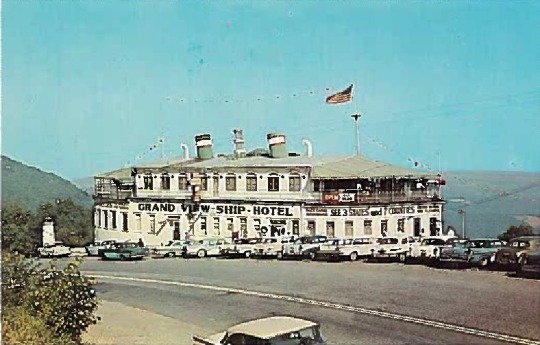
Postcard of the Ship Hotel (personal collection). Likely this is in the 1950s. Sorry for the degraded nature of the image.
In 1930, 33-year-old Louis “Lou” Franci and 37-year-old Emilio Rosso were living in the Turtle Creek Valley. They were not only neighbors on Humbert Street, with the Rosso family living in house 69 and the Francis in house 68, but were both Italian immigrants. The census from that time shows an Italian enclave in the area: of the nine families in Patton Township’s Mellon Plan, a jurisdiction in Turtle Creek, Allegheny County, Pennsylvania (PA), eight of them had Italian heritage. [1] Louis Franci and his wife, Jennie Baccarini, both Italian immigrants themselves, definitely felt at home.
Originally posted on the WordPress version of this blog on Jul. 24, 2019
Emilio lived with his 25-year-old wife, Adelina, his 5-year-old daughter, Clara, and 1-year-old son, Raymond. As for Louis, he lived with his 29-year-old wife, Jennie, 8-year-old daughter Lena, 6-year-old son Frank, 3-year-old daughter Alma, and seven-month-old daughter Ellen. While Jennie had come over to America in 1900 or 1901, as a baby carried in her mother’s arms, the story went that Louis was, a stowaway on a ship bound for America and joined by an unnamed friend. [2] However, this story is completely false, which should be explained in later posts on this blog. As for Emilio, he was an Italian immigrant and a World War I veteran who fought in the Meuse-Argonne Offensive and Battle of St. Michel in 1917.
Both Emilio and Louis had one thing in common: they were building contractors or more simply they were construction managers. In 1930, a hunting buddy of Louis, Dominick/Dominico Rustici, who was, like Louis and Emilio, an immigrant from Northern Italy, listed two people as witnesses for a naturalization document. [3] One of these men was Emilio, who was described as a general contractor from Wilmerding, PA, with his last name spelled incorrectly as Rasso by an unnamed immigration official. In later years, Rustici was a lodger with the Baccarini family, who likely treated him like a family friend since he listed John Baccarini, the father of Jennie, on his draft card as a person who would know where he lived.
Emilio and Louis would soon work on a project that would stand for years as a tourist attraction and symbolic of their achievement. Family lore had claimed for years that Louis was in charge of building the entire ship, but this is obviously an exaggeration. Dutch-born Herbert Paulson, had the idea for what would become the Bedford, PA landmark, the S.S. Grand View Point Hotel or Ship Hotel for short, and he would be its captain from the 1930s until the 1970s. Census information shows his progression into this role. In 1920, he was listed as a married employer in a boarding house, in 1930 he was listed a married storekeeper with a grocery store and in 1940 he was listed as a hotel keeper. [4] By 1940, he had been living in the Ship Hotel from 1932 onward, with his wife, Mary, and German-born children, two of whom (Walter and Erna) worked as clerks. Two other clerks, Cecilia Davis and Etta Pellis, were also listed as living with them.
In order to provide some more context, it is worth talking about the architect of the Ship Hotel, Alfred Sinnhuber. He was born in or around Berlin, Germany, arriving in the U.S. in 1903. He often called himself a “building designer” or architect and lived in Turtle Creek, but he had a job at the Westinghouse plant in East Pittsburgh. [5] He was at one point a “checker” and at another worked on the lathe, even as he was married to Elsa Marie Kristen and his children joined him in the plant. Working in the Westinghouse plant was the norm for those living in Pittsburgh and its suburbs, with Louis and Emilio likely working there at some point as well.
1931 would be a fateful year where 57-year-old Herbert and 56-year-old Albert would work with Emilio and Louis to build the Ship Hotel. [6] As the story goes, Herbert invited Emilio and Louis on a hunting trip, proposing to these two men the idea of expanding his existing hotel into the Ship Hotel. As local historian Brian Butko notes, Herbert has chosen these two men, who lived near the Westinghouse plant where he (and they likely) worked, assuming that folks living in Turtle Creek Valley “knew all about building on steep hillsides.” As Albert designed the new hotel and reportedly supervised the construction, Emilio and Louis were the construction managers. As for Herbert, who was a tool and die maker in the Pittsburgh plant, he reportedly told the PA state government, “it's my property, either you let me build it or you buy the property!”
The construction itself began in October 1931 the hotel, which would be shaped like a ship since fog in the valley reportedly looked like the sea. Herbert told them that they had from October until May of the following year to expand the hotel, a time frame of less than eight months, mostly in cold and snowy weather. A former owner of a car dealership in the area, Walter T. Matthews, told Butko that the ship needed over 63 tons of steel and cost about $125,000 to build, which was borrowed at 16% interest. [7] Matthews further claimed that Emilio and Louis went broke in attempting to build the base of the hotel, having to drill down 32 feet to find rock. But, this doesn’t tell the full picture. The site was over 2,400 feet above sea level and 500 feet below the Allegheny Mountain summit, making it hard to build. Specifically, there was burrowing under the Lincoln Highway (also known as U.S. Route 30), in order to insert the three heavy I-beams, with embedded huge concrete piers allowing the ship to “ride.” Other than the cement and 18 steel piers, numerous carloads of lumber were used for the 3/4-inch thick wood which was overlaid with metal siding, coming from at least 22 junked car frames to cover the hotel’s exterior. Also, nails and 72 tons of steel, by some counts, went into the construction of the expanded 5-floor-hotel, coupled with water piped from half-a-mile away.
Emilio and Louis undoubtedly did manual work to build the expanded hotel. However, as construction managers, they had a crew to help them with the laborious process. Years later, a living relative, Lou Balya, noted that her father, Joseph Ovarec had, in the words of the article writer, “helped build the Ship Hotel with the Paulson family back in the 1930s” and that four generations of her family were associated with the hotel itself. [8] In 1931, Ovarec, according to census records, was a 42-year-old coal miner from Czechoslovakia. He had a family of five, including himself, which were his 34-year-old wife, Anna, his 16-year-old daughter, Mary, and his 14-year-old daughter, Josephine. Later information described him as an “outside laborer.” This means it is possible then that many of the other laborers on the project were Eastern European.
After 1931, the Ship Hotel blossomed. At noon on May 29, 1932, after it was announced in the local Bedford Gazette, the ship opened, offering tours, staff inspections, and concerts. [9] On that day, the Bedford American Legion Junior band, a local German band, and Bedford High School band played, while a plane flew overhead dropping flowers on the ship’s deck and a stilt walker entertained guests later in the day. With the hotel, it remained, as one book put it, “one of the most significant scenic views on the North American continent” with views of a fertile region of PA, West Virginia, and of Maryland’s rolling hills. The main claim was that you could see “3 states and 7 counties” from the ship, with no official list of what one could see from the ship itself.
As years went by, the hotel stayed on despite difficulties. The Paulson family lived on the ship for years upon years, with Clara Paulson having the distinction as the only person who was born on the ship, and the family worked to keep it running. [10] As a part of day-to-day entertainment, a local comedian used his craft, a grand orchestra played, and much more, even when it was snow-bound in the winters. Beyond this, the ship was remodeled numerous times, thrived even with the building of the PA turnpike, suffered the brunt of anti-German discrimination during World War II, and stayed busy until the 1970s when public interest in roadside attractions was beginning to seriously wane.
It is not known whether Louis revisited the Ship Hotel later in his life. Despite the seventy-mile distance from Turtle Creek to the hotel, there is still a possibility he, or some of his related family members, visited again the ship he, along with many others, had worked laboriously on. [11] If he had visited it in 1954, for example, he would have been among the ranks of the reportedly 2 million people who visited it by that point, covering 20 volumes of registers, including those living in 62 foreign countries and possibly famous celebrities such as Calvin Coolidge, Henry Ford, Thomas Edison, and others. He likely would have seen the big business in souvenirs and refreshments the hotel did starting in 1932 and until Herbert’s death in 1973. Due to his death in 1967, he never saw the Loyas, who still have the old guest registers, owning the ship, after 1978 and turning it into “Noah’s Ark” before it fell into disrepair, then burning down in October 2001. He saw the Ship of the Alleghenies, as some called it, in its glory days, in its height.
Even though Louis Franci died on March 13, 1967, the Ship Hotel stood as a testament to his achievement as a contractor and builder, standing for seventy years (1931-2001) after its construction. In the end, his memory lives on not just in his living relatives but in the blueprints of the Ship Hotel still sitting in the office of his late son.
Editor's note: This is a story I wrote back in September 2016 but am publishing here to start off this blog on a strong footing. Some revisions have been made to protect living individuals.
© 2019-2023 Burkely Hermann. All rights reserved.
Notes
[1] U.S. Federal Census of 1930 for Patton, Allegheny, Pennsylvania. United States of America, Bureau of the Census. Fifteenth Census of the United States, 1930. Washington, D.C.: National Archives and Records Administration, 1930. T626, 2,667 rolls. Courtesy of ancestry.com; Route from Humbert Street to Mellon Plan, Google Maps, accessed September 5, 2016.
[2] According to conversation with my cousin M.G. on July 31, 2016 and in Summer 2016. Apparently, two of his sisters, Angelina and Barbara came to the United States while three of his sisters stayed in Italy along with his parents. Emilio Rosso Veterans Compensation Application, February 10, 1934, World War I Veterans Service and Compensation File, 1934–1948. RG 19, Series 19.91. Pennsylvania Historical and Museum Commission, Harrisburg Pennsylvania. Courtesy of ancestry.com.
[3] Dominico Rustici Petition of Citizenship, November 24, 1930, Naturalization Petitions of the U.S. District Court, 1820-1930, and Circuit Court, 1820-1911, for the Western District of Pennsylvania, National Archives Microfilm Publication M1537, Records of District Courts of the United States, Record Group 21, National Archives, Washington, D.C. Courtesy of ancestry.com; Dominico Rustici Petition for Naturalization, 1930, Record of Admissions to Citizenship, District of South Carolina, 1790-1906, National Archives Microfilm Publication M1183, Records of District Courts of the United States, Record Group 21, National Archives, Washington, D.C. Courtesy of ancestry.com; Passenger list of the Pesaro, 1921, Passenger Lists of Vessels Arriving at New York, New York, 1820-1897. Microfilm Publication M237, 675 rolls. NAI: 6256867. Records of the U.S. Customs Service, Record Group 36. National Archives at Washington, D.C. Courtesy of ancestry.com; U.S. Federal Census of 1910 for Young, Indiana, Pennsylvania, Thirteenth Census of the United States, 1910, NARA microfilm publication T624, Records of the Bureau of the Census, Record Group 29. National Archives, Washington, D.C. Courtesy of ancestry.com; Draft card for Domenico Rustici, United States, Selective Service System. Selective Service Registration Cards, World War II: Fourth Registration. Records of the Selective Service System, Record Group Number 147. National Archives and Records Administration. Courtesy of ancestry.com; 1940 U.S. Federal Census, April 1940, Alleghany County, PA, Patton Township, Mellon Plan. Courtesy of ancestry.com. This census claims that there are four people in the Baccarini house: John (aged 65, a coal loader), Celesta (his wife, aged 59, houseworker), Mario (aged 35, a coal loader), and Domenico Rustico (aged 48). The latter is a lodger who has, it seems, more money coming in, and working more hours than them in one category and the same in another.
[4] U.S. Federal Census of 1920 for Alleghany, Somerset, Pennsylvania, Fourteenth Census of the United States, 1920. (NARA microfilm publication T625, 2076 rolls). Records of the Bureau of the Census, Record Group 29. National Archives, Washington, D.C. Courtesy of ancestry.com; U.S. Federal Census of 1930 for Juniata, Bedford, Pennsylvania, United States of America, Bureau of the Census. Fifteenth Census of the United States, 1930. Washington, D.C.: National Archives and Records Administration, 1930. T626, 2,667 rolls. Courtesy of ancestry.com; U.S. Federal Census of 1940 for Juniata, Bedford, Pennsylvania, United States of America, Bureau of the Census. Sixteenth Census of the United States, 1940. Washington, D.C.: National Archives and Records Administration, 1940. T627, 4,643 rolls. Courtesy of ancestry.com.
[5] Birth of Elsa Irene Sinnhuber, Pennsylvania (State). Birth certificates, 1906–1908. Series 11.89 (50 cartons). Records of the Pennsylvania Department of Health, Record Group 11. Pennsylvania Historical and Museum Commission, Harrisburg, Pennsylvania. Courtesy of ancestry.com; Draft card of Albert Sinnhuber, United States, Selective Service System. World War I Selective Service System Draft Registration Cards, 1917-1918. Washington, D.C.: National Archives and Records Administration. M1509, 4,582 rolls. Imaged from Family History Library microfilm. Courtesy of ancestry.com; Albert Sinnhuber declaration in Pennsylvania, March 3, 1917, Naturalization Petitions for the Eastern District of Pennsylvania, 1795-1930. (National Archives Microfilm Publication M1522, 369 rolls); Records of District Courts of the United States, Record Group 21; National Archives, Washington, D.C. p. 258. Courtesy of ancestry.com; Albert Sinnhuber declaration in Pennsylvania, March 25, 1929, National Archives at Philadelphia; Philadelphia, Pennsylvania; ARC Title: Petitions for Naturalization, 1820 - 1979; NAI Number: 2837692; Record Group Title: Records of District Courts of the United States, 1685-2009; Record Group Number: RG 21. Courtesy of ancestry.com; U.S. Federal Census of 1930 for Turtle Creek, Allegheny, Pennsylvania, United States of America, Bureau of the Census. Fifteenth Census of the United States, 1930. Washington, D.C.: National Archives and Records Administration, 1930. T626, 2,667 rolls. Courtesy of ancestry.com; U.S. Federal Census of 1940 for Turtle Creek, Allegheny, Pennsylvania, United States of America, Bureau of the Census. Sixteenth Census of the United States, 1940. Washington, D.C.: National Archives and Records Administration, 1940. T627, 4,643 rolls. Courtesy of ancestry.com; Draft card of Albert Sinnhuber, United States, Selective Service System. World War I Selective Service System Draft Registration Cards, 1917-1918. Washington, D.C.: National Archives and Records Administration. M1509, 4,582 rolls. Imaged from Family History Library microfilm. Courtesy of ancestry.com; U.S. Federal Census of 1930 for Turtle Creek, Allegheny, Pennsylvania, United States of America, Bureau of the Census. Fifteenth Census of the United States, 1930. Washington, D.C.: National Archives and Records Administration, 1930. T626, 2,667 rolls. Courtesy of ancestry.com; U.S. Federal Census of 1940 for Turtle Creek, Allegheny, Pennsylvania, United States of America, Bureau of the Census. Sixteenth Census of the United States, 1940. Washington, D.C.: National Archives and Records Administration, 1940. T627, 4,643 rolls. Courtesy of ancestry.com.
[6] Herbert Paulson gravestone. Find A Grave, updated May 13, 2010, accessed September 5, 2016; Albert Sinnhuber gravestone. Find A Grave, updated October 10, 2011, accessed September 5, 2016; Death certificate of Albert Sinnhuber, Pennsylvania (State). Death certificates, 1906–1963. Series 11.90 (1,905 cartons). Records of the Pennsylvania Department of Health, Record Group 11. Pennsylvania Historical and Museum Commission, Harrisburg, Pennsylvania. Courtesy of ancestry.com. Dates of Sinnhuber on his grave seem to be wrong if one relies on his death certificate, which says that he was age 68 at his death in 1943, meaning he was born in 1875. Also see Brian Butko, The Ship Hotel: A Grand View along the Lincoln Highway (Mechanicsburg, PA: Stackpole Books, 2010), 34-5; “U.S.S. Grandview Ship Hotel: Lincoln Highway,” Miniature Railroad & Village, accessed September 5, 2016; Brian Butko, “Ship Hotel: Afloat with the Lincoln Highway's Most Unusual Landmark,” Pennsylvania Heritage Vol. XL, No. 2, Spring 2014.
[7] Brian Butko, Pennsylvania Traveler's Guide: The Lincoln Highway (Mechanicsburg, PA: Stackpole Books, 2002), 230-231; “Carnegie Science Center Unveils 2003 Miniature Railroad and Village,” Allegheny City Society Reporter Dispatch, Winter 2003, p. 3, accessed September 5, 2016; William A. White, “Mountain Ship,” The Pittsburgh Press, Section Two, March 23, 1954, p. 21. Courtesy of Google News Archive; “Just Another Roadside Attraction,” The Pittsburgh Press, June 28, 1986, Sunday Magazine, p. 7. Courtesy of Google News Archive; “U.S.S. Grandview Ship Hotel: Lincoln Highway”; “Ship Hotel: Afloat with the Lincoln Highway's Most Unusual Landmark”; David Greenlees, “The S. S. Grand View Point Hotel On The Lincoln Highway,” The Old Motor, July 9, 2012, accessed September 5, 2016.
[8] Chris Wechtenhiser, “Historic Ship Hotel burns,” Bedford Gazette, October 27-28, 2001; 1930 U.S. Federal Census for Lansford, Carbon, Pennsylvania, United States of America, Bureau of the Census. Fifteenth Census of the United States, 1930. Washington, D.C.: National Archives and Records Administration, 1930. T626, 2,667 rolls. Courtesy of ancestry.com; 1940 U.S. Federal Census for Wilkes-Barre, Luzerne, Pennsylvania, United States of America, Bureau of the Census. Sixteenth Census of the United States, 1940. Washington, D.C.: National Archives and Records Administration, 1940. T627, 4,643 rolls. Courtesy of ancestry.com. Oravec is not the same as one listed in the 1910 census as living in Spangler, Cambria, Pennsylvania and born in 1885. Also dates do not match up. Other workers on the ship included, but are not limited to, Cecelia Davies (Butko, The Ship Hotel, 88).
[9] Brian Butko, Pennsylvania Traveler's Guide: The Lincoln Highway (Mechanicsburg, PA: Stackpole Books, 2002), 230-231; Butko, The Ship Hotel, 35-36; “Ship Hotel: Afloat with the Lincoln Highway's Most Unusual Landmark"; The Federal Writers Project, The WPA Guide to Pennsylvania: The Keystone State (San Antonio: Trinity University Press, 1940 (2013 reprint)), 451; Patrick M. Reynolds, “Western Pennsylvania Embraces Visitors,” Reading Eagle, June 25, 1978, Leisure, p. 73. Courtesy of Google News Archive; Doug Pappas, “Grand View Hotel Tribute 2,” Lincoln Highway Home, Society for American Baseball Research, accessed September 5, 2016.
[10] Butko, The Ship Hotel, 42-44, 46-47, 49, 51, 54-55; “The S. S. Grand View Point Hotel On The Lincoln Highway.”
[11] Route from Turtle Creek to “scenic overlook” (former site of Ship Hotel), Google Maps, accessed September 5, 2016; Butko, The Ship Hotel, 44; William A. White, “Mountain Ship,” The Pittsburgh Press, Section Two, March 23, 1954, p. 21. Courtesy of Google News Archive; Gilbert Love, “Bedford Immersed In History and Elegance,” The Pittsburgh Press, October 25, 1972, p. 23. Courtesy of Google News Archive; “Just Another Roadside Attraction,” The Pittsburgh Press, June 28, 1986, Sunday Magazine, p. 7. Courtesy of Google News Archive; Butko, The Ship Hotel, 57-58, 61, 66-68, 70; Associated Press, “Fire destroys quirky ship hotel in Pennsylvania,” Rome News-Tribune, October 28, 2001, p. 5A, no. 501. Courtesy of the Google News Archive; Mary Thomas, “Passing Scenery,” Pittsburgh Post-Gazette, May 8, 2004, Homes & Gardens, Section B, p. B-6. Courtesy of Google News Archive; “Just Another Roadside Attraction,” The Pittsburgh Press, June 28, 1986, Sunday Magazine, p. 6-7. Courtesy of Google News Archive; Associated Press, “Group wants to restore hotel in shape of ship,” Gettysburg Times, Aug. 3, 1998, Vol. 96, no. 183, Digest, p. A2. Courtesy of Google News Archive; Associated Press, “Group wants to restore Ship Hotel,” Beaver County Times, Aug. 2, 1998, Sports, p. B7. Courtesy of Google News Archive; Tom Gibb, “Fire sinks the 'Ship,' U.S. 30 hotel-eatery,” Pittsburgh Post-Gazette, October 27, 2001; Chris Wechtenhiser, “Historic Ship Hotel burns,” Bedford Gazette, October 27-28, 2001; Doug Pappas, “Grand View Hotel Tribute,” Lincoln Highway Home, Society for American Baseball Research, accessed September 5, 2016; Doug Pappas, “Grand View Hotel Tribute 3,” Lincoln Highway Home, Society for American Baseball Research, accessed September 5, 2016; “The S.S. Grand View Point Hotel,” Lincoln Highway Corridor, 2016, accessed September 5, 2016; Patricia Lowry, “Ship Hotel has sailed, but a jaunty new book honors its history and heyday,” Pittsburgh Post-Gazette, April 12, 2010; Tom Gibb, “The Ship sails choppy seas,” Pittsburgh Post-Gazette, November 15, 1998; Doug Kirby, Ken Smith, and Mike Wilkins, “Lincoln Highway's Ship of the Alleghenies Burns,” RoadsideAmerica.com, Accessed September 5, 2016; David Greenlees, “The S. S. Grand View Point Hotel On The Lincoln Highway,” The Old Motor, July 9, 2012, accessed September 5, 2016; Richard Funk, Along Pennsylvania's Lincoln Highway (San Francisco, CA: Arcadia Publishing, 2006), 91; “Local Fun,” Schellsburg, PA, Accessed September 5, 2016; Jeffrey J. Kitsko, “Lincoln Highway,” November 27, 2015, accessed September 5, 2016; “3 States And 7 Counties!,” WQED, August 15, 2008, accessed September 5, 2016; Jerin Miller and Angelica W. Capone, “A Coffee Pot for Giants,” Pennsylvania Center for the Book (Penn State), Fall 2010 and Spring 2011, accessed on September 5, 201; Charles Phoenix, “S.S. GRAND VIEW SHIP HOTEL, BEDFORD COUNTY, PENNSYLVANIA, 1957,” Charles Phoenix, 2016, accessed September 5, 2016.
#louis franci#ship hotel#emilio rosso#italians#immigrants#immigration#family history#census#jennie baccarini#baccarini#world war 1#wilmerding#dominico rustici#rustici#s.s. grand view point hotel#bedford#servants#turtle creek#westinghouse#east pittsburgh#pittsburgh#pennsylvania#suburbs#brian butko#alleghany mountains#eastern europe#world war ii#lincoln highway#1950s#loyas
0 notes
Text

Vincenzo Rustici Saint Cecilia at the organ, flanked by angels
Oil on canvas, 65.2 x 65.2 cm, 16th/17th century
31 notes
·
View notes
Text
adapting to my familys lifestyle in italy while im on holiday there is soooo crazy like wdym i gotta get all dressed up every night just in case we run into someone we know during our evening passeggiata😐
#i feel like a love island girlie having to do my hair n makeup every evening😑#the one pro is i usually get a little treat out of it and tonight its rustici babyyyyyyy hell yeah😋😋😋#also this is why im a little mia rn lichrally all im doing is eating sleeping and going to the beach <3
3 notes
·
View notes
Video
youtube
COME SMETTERE DI FARCI ADDOMESTICARE - di FIORELLA RUSTICI
0 notes
Video
youtube
RUSTICI #wurstel #pastasfoglia #unalunapercucinare
0 notes
Text






























Живописная швейцарская деревня Форольо.
Форольо распологается в долине Бавона, и входит в число самых красивых деревень региона Тичино. Бавона считается одной из самых узких и скалистых долин в альпийском регионе. В деревне находятся традиционные каменные дома, которые называют Rustici, а также удивительный 108 метровый водопад — Форольо.
До этого места не так просто добраться, поэтому здесь редко можно увидеть толпы туристов. Обычно сюда приезжают, чтобы отдохнуть от шума и суеты больших городов. Форольо – это очень тихое и уединенное место. В долине протекает река Бавона, через которую перекинут каменный мост. Скалы, водопады и леса – это главные достопримечательности региона. Камней здесь так много, что местные жители строили из них дома.
Интересно то, что в долине три гидроэлектростанции, а сама долина электричеством не обеспечена – кроме подвесной канатной дороги Robiei. Единственными источниками энергии являются солнечные батареи, бензин, небольшие водяные турбины, свечи и нефть.Климат в этом кантоне очень теплый и солнечный,потому что он находится на южном склоне самого высокого альпийского хребта. Здешнее население издавна занималось скотоводством, а сейчас весь кантон больше живет туризмом.
Picturesque Swiss village of Foroglio.
Foroglio is located in the Bavona Valley and is one of the most beautiful villages in the Ticino region. Bavona is considered one of the narrowest and rockiest valleys in the Alpine region. The village has traditional stone houses called Rustici, as well as an amazing 108-meter waterfall - Foroglio.
This place is not so easy to get to, so you will rarely see crowds of tourists here. Usually people come here to relax from the hustle and bustle of big cities. Foroglio is a very quiet and secluded place. The Bavona River flows through the valley, across which a stone bridge is thrown. Rocks, waterfalls and forests are the main attractions of the region. There are so many stones here that locals built houses from them.
It is interesting that there are three hydroelectric power stations in the valley, and the valley itself is not provided with electricity - except for the Robiei cable car. The only sources of energy are solar panels, petrol, small water turbines, candles and oil. The climate in this canton is very warm and sunny, because it is located on the southern slope of the highest Alpine ridge. The local population has long been engaged in cattle breeding, and now the whole canton lives more on tourism.
Источник://t.me/roundtravel,//www.infrance.su/forum/showthread.php?t=86153&page=2,/vk.com/wall-67490365_86179,/pikabu.ru/story/ derevnya_forolo_shveytsariya_8637113,://dzen.ru/a/YXf6i8PoMSCMeU3v,/muz4in.net/dir/arkhitektura/skazochnaja_derevnja_forolo_shvejcarija/12-1-0-15484,/janthina-a-vela.livejournal.com/16404.html, vk.com/wall-61139750_4890.
#Switzerland#Bavona#village#Foroglio#Cottagecore#stone houses#nature#autumn#mountains#trees and forest#waterfall#river#nature aesthetic#landscape photography#nature video#nature photography#Швейцария#Бавона#деревня#Форольо#природа#осень#Пейзаж#горы и лес#водопад#река#деревенская эстетика#каменые дома
252 notes
·
View notes
Text
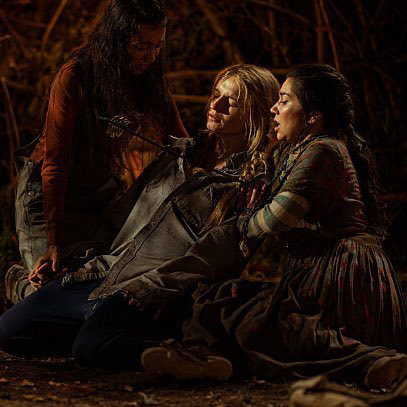


Yellowjackets 3.07
Francesco Rustici- Death of Lucretia (1624-25)
Simone Peterzano- The Deposition of Christ (1583-1584)
60 notes
·
View notes
Note
hi!! I was doing some research for a lil project a while back, and I stumbled across the funniest article of all time imo. You probably know about it given lichens and all that, but if you haven't I think it would be a shame to be missing out on it.
I'm not sure if Tumblr blocks links on anon so it's A Short History of Lichenology by Charles C. Plitt! Favorite quotes include:
Even Linnaeus dubbed them the "rustici pauperrimi" of vegetation, which has been quite properly translated, the "poor trash" of vegetation.
It goes without saying, that most of these ideas were not founded upon direct observations, but were merely opinions.
It invests them as a spider her prey, with a fine meshed web, which gradually is converted into an impregnable integument, but, whilst the spider sucks out her prey and throws it aside when dead, the Fungus stimulates the Algae, found in its net, to more lively activity, in fact, causes them to grow larger and causes thereby a luxuriant growth and the thrifty appearance of the whole colony.
- @hotmushroompics
Oh my gosh I love old descriptions of lichens. First off, Linnaeus, RUDE. I can't believe that guy. Second, so much lichenology still rests in the realm of opinion since lichen observation is difficult. Why do they do everything so slowly??? Third, not a good enough reason to use the word "stimulate," but ok, whatever. I will have to make a post on historical lichenology one of these days. It's so fascinating and dramatic, and includes a long-standing feud between Beatrix Potter (yes THAT Beatrix Potter) and the Linnean Society (sexist asshats).
30 notes
·
View notes
Text

Francesco Rustici called Il Rustichino, 1592-1626
The Penitent Magdalene, n/d, oil on canvas, 124.8x93.3 cm
Private Collection
27 notes
·
View notes
Text
Raining over the Rustici stone houses in the scenic village of Foroglio, within the picturesque Val Bavona in the region of Ticino, Switzerland 🌧️
73 notes
·
View notes
Text

Saint George and the Dragon, carved marble, by Giovan Francesco Rustici, ca. 1515, Florence - Inspired by Donatello's 15th century work on the same subject.
Museum of Fine Art, Budapest
14 notes
·
View notes
Video
youtube
#rustici #fiori di wurstel / APERITIVO
0 notes
Text
Közben lett egy bimbózó szerelem
Azért nem állt le teljesen az olasz ház kutatási projekt, de az elvárás massza képlékeny. Az elsődleges elvárás, hogy bele tudom-e álmodni az életemet, szokásaimat és a változás iránti igényeimet az adott házba. Meg persze némi sznobizmus, hogy nem akarok egy vályogkunyhóban lakni, még a tengerparton sem. Találtam ezt a házat, ami két lakás valójában, két nagy terasszal és egy tüneményes kisvárossal, kilátással az éppen kiapadó folyóra és a hídra meg a hegyekre. Szóval, ezen a teraszon lehet nagyregényeket írni, a kutyákat meg futtatni a folyóparton, mert kert viszont nincs, de akkor gond sincs vele viszont van vendégszoba meg hodálynyi társalgó a közös programokhoz. Az ára is elég jó, szóval meg kéne nézni nagyon. Ha jól látom kb márciusra összejön megint egy tucatnyi cím, amit meg kéne nézni. Gürizhetek, hogy legyen pénz az utazásra. Ez a ház most nekem is és a barátnőmnek is tetszik, és megteremtődne az, hogy csupán társasházi kapcsolat legyen, ne közös udvar vagy kert. Hogy csak a barátság előnyeit élvezzük, ne menjünk egymás agyára. Leteszem itt, meglátjuk mi lesz.
https://busalla1.tecnocasa.it/vobbia/rustici-cascine-case-in-vendita-60739822
https://www.idealista.it/immobile/28470028/
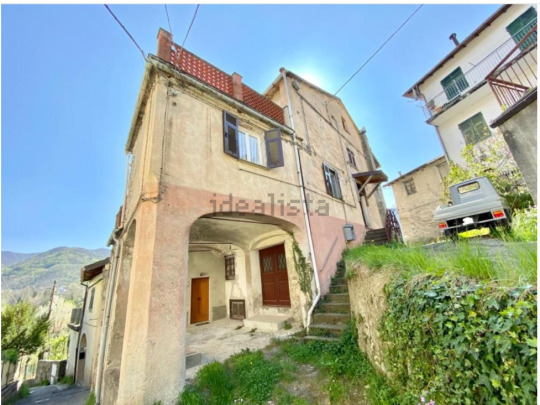
Imádnivalón hangulatos romos bejárat

A teraszokról ezt látni...
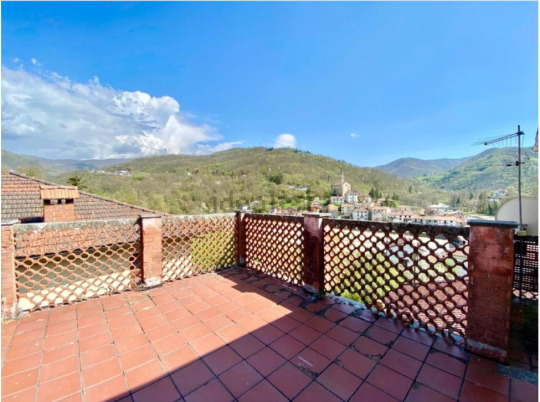
21 notes
·
View notes
Text
Vanno e vengono come le onde del mare
Sulle nostre passeggiate a mare, qui, nell’estremo ponente ligure, oggi come oggi è tutto un gran correre, un marciare, tutt’al più un andare a passo spedito, anche un grande sfoggio di biciclette tecnologicamente avanzate, condotte da persone in abbigliamenti confacenti. Non solo l’immutabile strascichio di piedi, insomma.
Eppure, come ho letto ancora di recente circa gli esordi di grandi atleti italiani, negli anni ‘60 del secolo scorso chi si affannava per strada veniva guardato a dir poco come persona stravagante.
Sessant’anni fa o giù di lì, se si doveva fare una selezione per la campestre provinciale delle scuole medie superiori si poteva finire - bontà d’animo dei gestori! - sulla pista d’asfalto dei go-karts di Ventimiglia: d’altronde lo stesso appuntamento provinciale - alla faccia del nome! - non si svolgeva certo per rustici sentieri, ma sulla tratta iniziale della strada Borgo Prino di Imperia per Dolcedo (e con partenza dalla struttura del campo di pista di atletica leggera di Borgo Prino, dove le competizioni studentesche specifiche ben potevano tenersi, pur trattandosi - a quei tempi! - ancora di un impianto militare).
Di palestre degne di questo nome c’era solo quella di Ventimiglia, già casa fascista della gioventù del littorio, ma il terreno esterno - oggi un bel parcheggio per auto! - per le varie prove di atletica non consisteva certo in morbida terra rossa, per non dire delle curve che si dovevano imprimere alle piste per gli scatti veloci.
Al calcio ci si iniziava come andava andava. In tanti - e probabilmente molti di questi furono destinati a diventare i più bravi in loco nella specialità - sul cemento dei Salesiani di Vallecrosia. Ma anche intorno, per non dire, a rischio e pericolo, pure dentro il campo di aviazione delle Braie di Camporosso: tanto, una volta chiuso questo, non passò molto tempo per fare sbaraccare tutta la zona.
Per il nuoto ci si arrangiava in mare. Per il ciclismo, a prescindere da chi usava i due pedali per lavoro o semplici passeggiate-spostamenti, chi ci si azzardava con mezzi più o meno confacenti veniva catalogato come mosca bianca ancor più che per gli altri casi già citati.
A distanza di anni, invero, ho messo a fuoco che forse, fatte le debite proporzioni, c’era un congruo numero di persone dedite a forme varie di motociclismo e di rally automobilistici, forse più come conseguenza dei mestieri praticati che come sincera esigenza di dissipare sudati risparmi.
Certo, allo stato attuale non mancano campi di calcio, piscine, palestre ben attrezzate, piste ciclabili, persino un campo di atletica leggera - invero, difficile da conservare al meglio - sorto sulle “ceneri” del vecchio spiazzo di atterraggio, maneggi con cavalli. Il quadro non è completo, così come non mi sono sforzato di indagare meglio sul passato, trascurando ad esempio il tiro al volo e la pesca per diletto, sia dalle spiagge - questa sì ancora ben praticata - sia in barca, sia nei torrenti o nel nostro unico fiume: ma i ricordi - si sa! - vanno e vengono come le onde del mare…
Adriano Maini







2 notes
·
View notes
Text
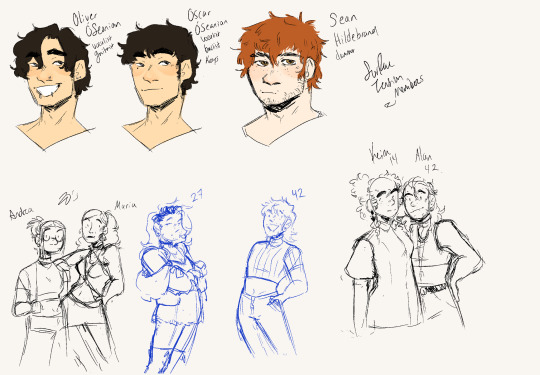
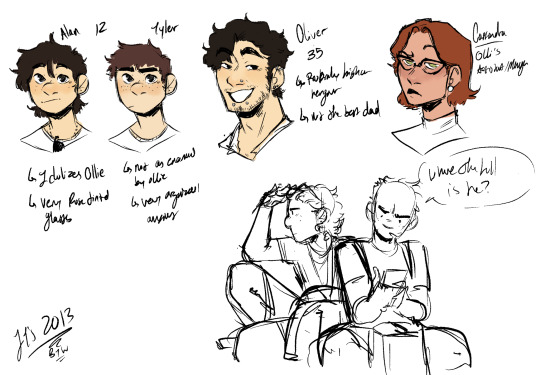


A dump of various Alan related stuff. Most of it’s related to his past and future (bc fun fact he ages in real time lol)
I wanna dive into Alan’s dad, Ollie’s whole deal at some point but for now I’ve just been doing some redesigns. (Plus some designs for his bandmates when they were at their peak before they broke up.)
The last 2 are all future Alan from when he’s in his 30s. We’ve got a cute family photo of the Myers-Rustici family and then a little doodle of Alan and his daughter Kieran.
2 notes
·
View notes
Text
Totally unrelated set of songs I have here :) it’s up to you to figure out their commonality
#autism#touching grass:fav music of 2024#remember your first amendment rights#the crane wives#music recs#Spotify
3 notes
·
View notes